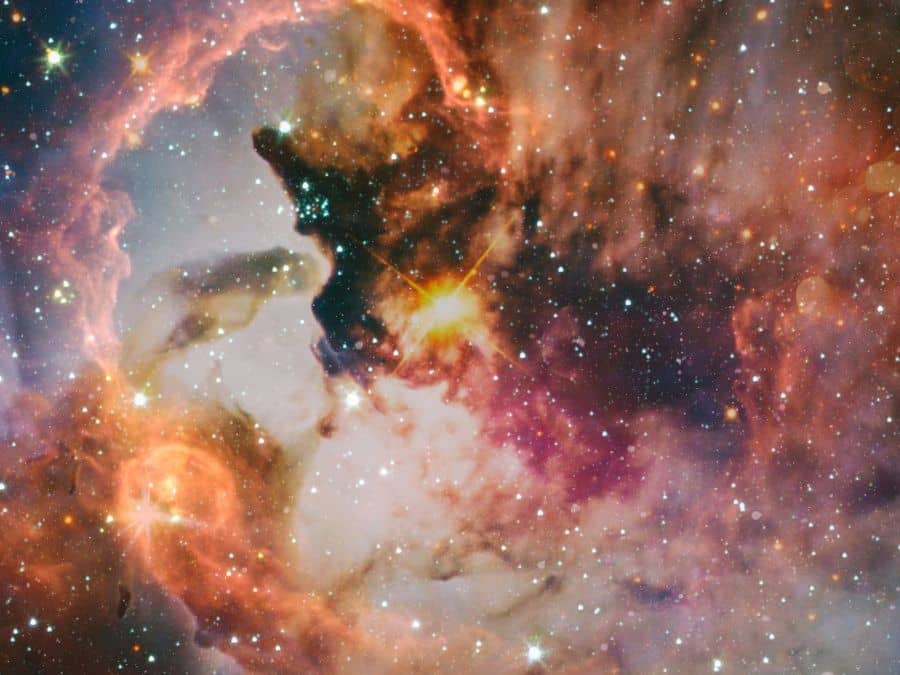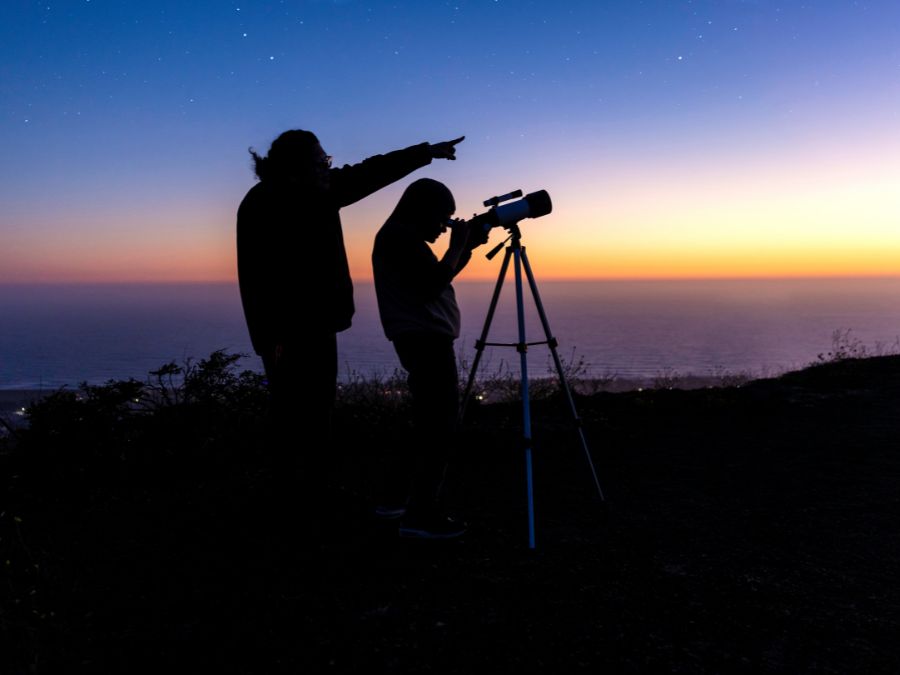Beginner’s Stargazing Guide
The Fascination of Stargazing: Why Look Up?
Stargazing has captivated human beings for thousands of years. From ancient civilizations to modern-day amateur astronomers, people have been drawn to the night sky’s mystery, beauty, and wonder. Check this out about The Best DIY Projects That Can Change the Look of Your House
For some, stargazing is a therapeutic escape from the hustle and bustle of daily life. For others, it’s a way to connect with the universe and ponder the big questions of existence.
Whatever your reason for stargazing might be, there are many benefits that come with this fascinating hobby. One benefit of stargazing is its ability to inspire curiosity and wonder.
When you look up at the stars on a clear night sky, you’re reminded that you’re just one small part of an incredibly vast universe. This can be both humbling and exhilarating at the same time, as you marvel at the sheer scale and diversity of celestial objects around us.
Another benefit is that stargazing provides an opportunity to learn about astronomy and science in general. By understanding what we see in the night sky, we gain insight into how our world works and our place in it.
Stargazing can also spark an interest in other scientific fields such as physics or chemistry. Understanding the Night Sky: Why It Matters
While stargazing itself can be a gratifying pastime, understanding what you’re looking at takes it to another level entirely. Knowing which constellations are visible or identifying which planets are present allows us to interpret what we see more accurately.
A few reasons why this knowledge is valuable include: – Appreciation: Knowing about celestial bodies enhances your appreciation for them.
– Navigation: While most people won’t rely on celestial navigation skills today due to GPS technology advancements; learning this skill set may still be useful. – Science: As mentioned earlier in this introduction; knowledge about astronomy translates into learning about other scientific fields as well; so it’s essential to understand the night sky.

Getting Started with Stargazing
Choosing a Location for Stargazing
When looking for a location to stargaze, it’s important to find a place that is far away from the city lights and other sources of light pollution. This will give you the best chance of seeing more stars and celestial objects in the sky. One great option is to head out to a local park or nature reserve that is known for its dark skies.
If you live in an urban area, consider driving out to a nearby rural area where there are fewer streetlights and buildings blocking your view. Another thing to consider when choosing a location is how accessible it is.
If you’re planning on spending several hours stargazing, you’ll want somewhere comfortable where you can lay down and relax without worrying about being disturbed. Look for places with soft ground or grassy areas where you can set up blankets or lawn chairs.
Understanding the Best Time to Stargaze
The best time to stargaze depends on what celestial objects you want to observe. For example, if you’re interested in seeing planets, they are most visible in the early evening or early morning hours when they are closer to the horizon. On the other hand, if you’re hoping to see shooting stars or meteor showers, these events are usually best observed late at night or in the early morning hours.
It’s also important to pay attention to weather conditions when planning your stargazing adventure. Cloudy skies will obviously make it difficult (if not impossible) to see any celestial objects in the sky, so be sure to check weather forecasts before heading out.
Preparing for Stargazing
Before heading out for a night of stargazing, there are some essential items that you’ll want to bring with you. Firstly, make sure that you dress appropriately for the weather.
Even in the summer months, temperatures can drop significantly once the sun goes down, so bring a warm jacket or sweater. You’ll also want to bring a flashlight (preferably one with a red filter to avoid disrupting your night vision), snacks and drinks, and any other equipment you plan on using (such as binoculars or a telescope).
Be sure to check that all of your equipment is in good working order before setting out. Make sure that someone knows where you are going and when you plan on returning, just in case something unexpected happens while you’re out stargazing.

Identifying Stars and Constellations
Lost in Space? No Worries!One of the most exciting aspects of stargazing is identifying stars and constellations. However, for beginners, the night sky can be overwhelming and confusing. Fortunately, reading star maps and charts is a skill that can be easily learned with a little practice. Firstly, it’s essential to find a good star map or chart that shows all the constellations visible in your location. You can either find one online or download an app on your smartphone. Once you have your map or chart, find a comfortable spot and allow your eyes to adjust to the dark. Next, locate the brightest stars in the sky using your star map as a guide. These stars are usually part of popular constellations like Orion or Ursa Major. By connecting these bright stars with lines as shown on the map, you’ll start to recognize familiar shapes such as animals or mythological figures.
The Stories Behind The Stars
The significance of stars varies across different cultures throughout history. For example, in Greek mythology, Orion was a great hunter who was placed among the stars after his death. In Native American culture, Ursa Major represented a bear that helped guide hunters at night.
Learning about different cultural interpretations of celestial patterns can add another layer of fascination to stargazing. It gives us insight into how people from different times and places understood and related to nature.
Practice Makes Perfect (And Fun!)
Identifying stars and constellations takes practice but remember not to take it too seriously – it’s all about having fun! Grab some popcorns with friends or family members and play games like “Name That Star” by taking turns identifying various celestial objects using your maps/charts.
It’s also important not to get discouraged if you don’t recognize everything on your first try. With time and practice, you’ll start to see patterns and learn to read the night sky like a pro!

Observing Planets and Other Celestial Bodies
Identifying planets visible to the naked eye (e.g., Venus, Mars)
When stargazing, it’s not just about stars and constellations. There are plenty of planets that can also be seen with the naked eye.
The five brightest planets – Mercury, Venus, Mars, Jupiter, and Saturn – can all be spotted at various times throughout the year. Venus is particularly easy to identify due to its bright appearance in the night sky.
It’s often referred to as the “morning star” or “evening star,” depending on when it’s visible. Mars is another planet that can be seen with the naked eye.
However, it’s usually easier to spot when it’s at its closest point to Earth during its opposition cycle. This happens approximately every two years, so keep an eye out for it during those times.
Using binoculars or telescopes to observe celestial bodies (e.g., galaxies, nebulae)
While observing planets with the naked eye is certainly awe-inspiring, using binoculars or telescopes can take stargazing to a whole new level. Binoculars are a great option for beginners because they’re relatively inexpensive and easy to use. They’re especially useful for observing objects like star clusters and galaxies. Click for more about this article Home Makeover: 8 Dos and Don’ts to Create a Space You Love
If you want an even closer look at celestial bodies beyond our own solar system, a telescope is definitely worth investing in. Telescopes allow you to see details like craters on the moon and rings around Saturn that wouldn’t be visible with just your eyes or binoculars.
Learning about meteor showers and other astronomical events
Meteor showers are one of the most exciting events for stargazers because they involve seeing shooting stars streak across the sky in abundance. The best way to observe a meteor shower is to find a location with clear skies and little light pollution.
Some of the most notable meteor showers include the Perseids in August and the Geminids in December. In addition to meteor showers, there are plenty of other astronomical events worth keeping an eye out for.
These can include things like lunar eclipses, solar eclipses, and even comet sightings. Keeping track of these events will not only make your stargazing more exciting but will also provide opportunities to learn even more about the cosmos around us.

Advanced Techniques for Stargazers
Capturing Images of Celestial Bodies
Stargazing is an exciting and rewarding activity, and capturing images of the celestial bodies you observe can be a fantastic way to capture and remember your experience. With modern technology, even beginners can take high-quality photos of the night sky with just a camera or smartphone.
The first step is to find a dark location away from light pollution – this will help you capture clear images of the stars. To start, it’s important to have a camera with manual settings such as ISO, aperture, and shutter speed.
This will help you adjust your settings according to the brightness of the stars or planets you are trying to capture. It’s also recommended to use a tripod or any stable surface where you can place your camera while taking pictures.
Once you’re set up and ready to go, start by experimenting with different exposure times (the amount of time your camera lens takes in light) until you find what works best for your situation. If using a smartphone, try downloading free stargazing apps that can help locate specific stars or planets in real-time.
Participating in Citizen Science Projects
Citizen science projects are collaborations between professional scientists and volunteers who come together to collect and analyze data on various topics – including astronomy! These projects vary from monitoring light pollution levels in different areas around the world to tracking asteroids that could potentially harm Earth. If you’re interested in contributing data while also learning more about astronomy, there are plenty of citizen science projects available online for stargazers like yourself.
These include NASA’s GLOBE Observer program which collects cloud observations from around the world as well as Galaxy Zoo where volunteers classify different types of galaxies based on their shape. By participating in these projects, not only will you gain valuable knowledge about astronomy but also feel empowered knowing that you are contributing to real scientific research.
Conclusion
Whether you’re just starting or have been stargazing for a while, there’s always something new to learn about the night sky. By experimenting with advanced techniques such as capturing images or participating in citizen science projects, you can deepen your understanding of astronomy and even make a valuable contribution to the scientific community.
Remember, stargazing is not just about looking up at the stars – it’s about exploring the universe around us and finding new ways to connect with it. So grab your camera, join a citizen science project, and keep exploring!

Safety Considerations for Stargazers
The Hazards You Need to Know About When Stargazing
While stargazing can be a lot of fun, it’s important to remember that there are some potential hazards associated with the activity. One of the most common is wildlife. Depending on where you choose to stargaze, you may encounter animals like snakes or bears.
Be sure to research the area beforehand and take necessary precautions, such as making noise or bringing appropriate gear. Another hazard to watch out for is weather conditions.
If you’re planning on spending an extended period outside, it’s crucial that you dress appropriately and bring gear to protect yourself from rain or cold temperatures. It’s also a good idea to keep an eye on the forecast and stay aware of any sudden changes in weather.
How to Stay Safe While Stargazing
So what can you do to stay safe while stargazing? First and foremost, make sure that you’re prepared with all the necessary equipment and attire before heading out. This includes things like sturdy shoes, warm clothing, a flashlight or headlamp (with extra batteries), and a first aid kit.
Additionally, when choosing a location for stargazing, try to find somewhere well-lit with easy access in case of an emergency. If possible, bring along other stargazers so that you’re not alone – this will not only help mitigate any potential safety risks but will also make your experience more enjoyable overall.
Overall, exploring the night sky can be an incredibly rewarding experience – one that has captivated humans for centuries. From identifying constellations to observing planets and other celestial bodies in our solar system and beyond, there is so much wonder waiting to be discovered above us.
But before embarking on your own journey through the stars, it’s important to take safety into consideration and do your research. By understanding potential hazards and taking the necessary precautions, you can ensure that your stargazing experience is not only enjoyable but also safe.
So go ahead, grab a blanket, head outside, and see what secrets the night sky has in store for you. Happy stargazing!







